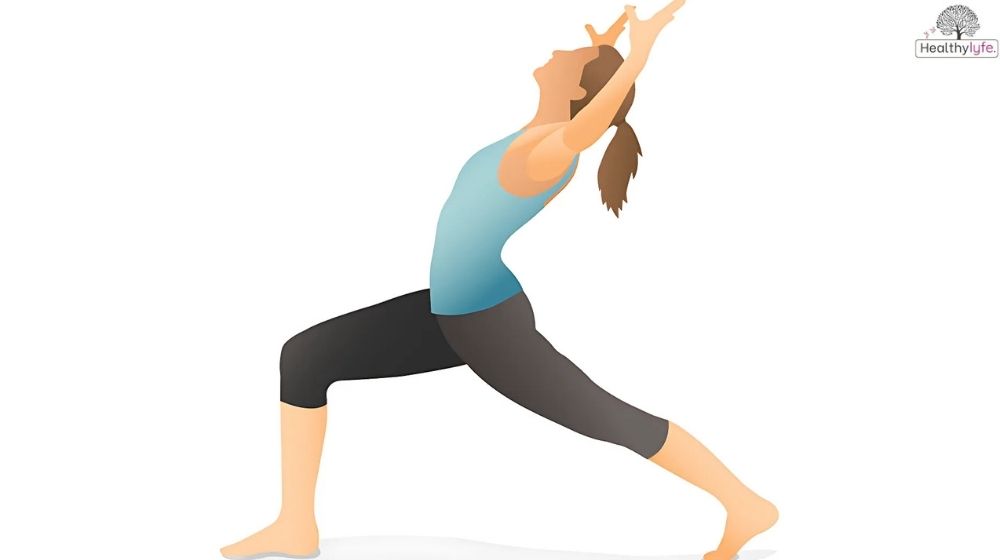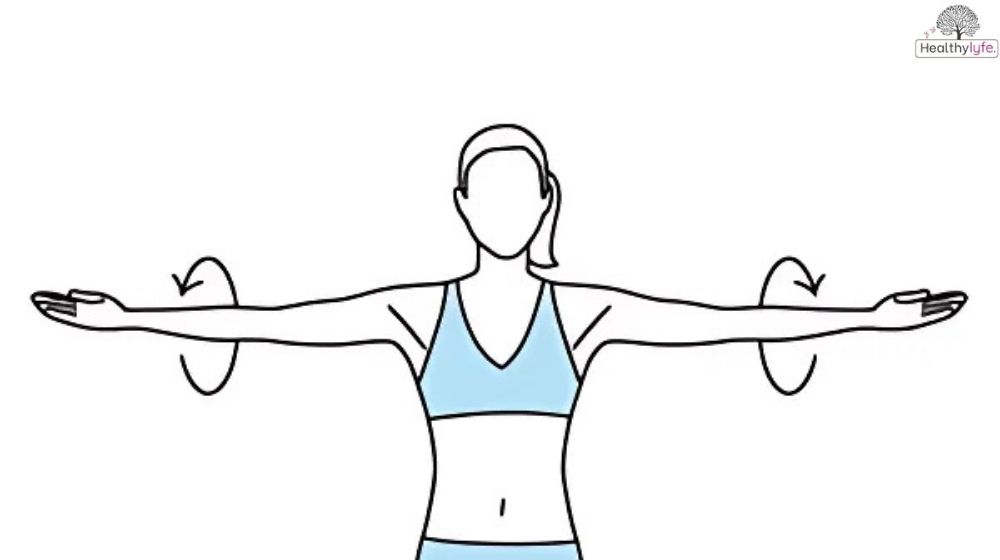Learn why Cactus Arms is a top upper body exercise to strengthen shoulders, improve posture, and boost mobility. Effective, and easy to try.
Introduction
Cactus Arms is a simple yet highly effective exercise for building upper body strength, particularly targeting the shoulders, arms, and upper back. It involves extending your arms to the sides in a “cactus” position, engaging the muscles as you hold or move them. This exercise can be done anywhere, without the need for equipment, making it accessible for people of all fitness levels. Cactus Arms help improve posture, increase shoulder stability, and enhance muscle endurance, making it an excellent addition to your upper body workout routine.
What is Cactus Arms?
Cactus Arms is a bodyweight exercise designed to target and strengthen the upper body, specifically the shoulders, arms, and upper back. The movement involves raising your arms to the sides at a 90-degree angle, mimicking the shape of a cactus, with your elbows bent at 90 degrees. This position engages the muscles in your shoulders, back, and arms as you hold the posture or move through specific variations. Cactus Arms can be used to improve posture, increase upper body strength, and enhance muscle endurance, making it a simple yet powerful exercise for overall upper body conditioning.
Types of Cactus Arms Exercises
Cactus Arms exercises are versatile and effective for building upper body strength and improving posture. Here are simple variations to try:

- Static Cactus Hold
- Raise your arms to shoulder height, bend elbows at 90 degrees, and hold.
- Benefit: Strengthens shoulders and upper back.
- Cactus Pulses
- In the cactus position, pulse your arms up and down slightly.
- Benefit: Improves shoulder stability and endurance.
- Cactus Rotations
- Rotate your arms forward and backward while maintaining the cactus shape.
- Benefit: Enhances shoulder mobility.
- Cactus with Resistance Bands
- Hold a resistance band and stretch it outward in the cactus position.
- Benefit: Adds resistance for stronger muscles.
- Cactus Push-Ups
- Lower your body into a push-up while keeping elbows bent at 90 degrees.
- Benefit: Builds chest, shoulders, and tricep strength.
- Cactus in Yoga Poses
- Use the cactus arm position in poses like Warrior II or Mountain Pose.
- Benefit: Opens the chest and improves posture.
- Dynamic Cactus Stretch
- Move arms from the cactus position to overhead extensions repeatedly.
- Benefit: Boosts flexibility and shoulder strength.
How to Do Cactus Arms [1]
Cactus Arms is a versatile arm position that can be used to open up the chest, improve posture, and build upper body strength. It’s commonly included in yoga for heart-opening poses, in fitness for shoulder engagement, and in dance for creating expressive movements. This pose helps to:
- Stretch the shoulders and chest.
- Strengthen the upper back and arms.
- Promote better posture.
Steps to Perform Cactus Arms
Find Your Starting Position
- Stand or sit with a tall spine, feet hip-width apart (if standing), or sit cross-legged.
- Ground yourself, ensuring your posture is aligned: shoulders relaxed, chest open, and chin parallel to the floor.
Position Your Arms
- Lift your arms to shoulder height, creating a 90-degree angle at your elbows.
- Your upper arms should be parallel to the ground, and your forearms should point upward, perpendicular to the floor.
- Your palms face forward, and your fingers are relaxed or gently spread.
Align Your Shoulders
- Draw your shoulder blades together slightly, opening up the chest.
- Keep the shoulders away from your ears to avoid tension.
Engage the Muscles
- Actively press your elbows back as if they’re reaching toward an invisible wall behind you.
- Maintain engagement in the upper arms, shoulders, and upper back.
Add Movement (Optional)
- For a dynamic version, you can move your arms up and down like a mini-press.
- Alternatively, rotate your shoulders to move your forearms forward and backward (as in a scapular mobility exercise).
Benefits of Cactus Arms
Cactus arms is a simple yet effective arm position that can greatly improve your posture, flexibility, and upper-body strength. By lifting your arms to the sides and bending your elbows at a 90-degree angle, you activate key muscles in your shoulders, back, and chest. This position offers a range of physical and mental benefits, making it a valuable addition to any workout routine.
Improves Shoulder Mobility
Cactus arms helps to open up your shoulders and increase their range of motion. This is especially beneficial for relieving tightness and tension caused by long periods of sitting or repetitive movements.
Boosts Posture
By strengthening the muscles in your upper back and shoulders, cactus arms promote better alignment and help you stand taller. This reduces the risk of slouching and improves overall posture.
Strengthens Upper Body
The cactus arms position engages muscles in your shoulders, upper back, and arms, helping to build strength without the need for weights or equipment. It’s a great way to tone and stabilize the upper body.
Increases Chest Flexibility
Stretching the chest with cactus arms improves flexibility and can relieve tightness in the chest muscles. This is particularly helpful for people who spend a lot of time sitting or working at a desk.
Enhances Mind-Body Awareness
Cactus arms encourages mindful movement by focusing on your breath and body alignment. This helps reduce stress and increases your awareness of your body’s position, supporting overall well-being.
Diet Plan for Cactus Arms
Achieving better strength, flexibility, and overall muscle tone for exercises like cactus arms isn’t just about practicing the pose; it’s also about fueling your body with the right nutrients. A balanced diet that supports muscle health, joint mobility, and overall energy levels is key. For optimal results, focus on a mix of protein for muscle repair, healthy fats for joint health, and a variety of vitamins and minerals to support flexibility and reduce inflammation.
Here’s a sample diet plan to help support your cactus arms practice and improve your overall fitness.
| Meal | Food Choices | Benefits |
|---|---|---|
| Breakfast | Scrambled eggs with spinach and whole-grain toast | Provides protein for muscle repair, spinach for flexibility (rich in magnesium), and whole grains for energy. |
| Mid-Morning Snack | Greek yogurt with chia seeds and mixed berries | Packed with protein and omega-3s for joint health, plus antioxidants from berries to reduce inflammation. |
| Lunch | Grilled chicken salad with mixed greens, avocado, and olive oil | High in lean protein for muscle strength, healthy fats from avocado and olive oil for joint support, and greens for overall health and flexibility. |
| Afternoon Snack | Almonds and a small apple | Healthy fats and protein from almonds support muscle repair, while apples provide vitamins for recovery and joint health. |
| Dinner | Salmon with quinoa and steamed broccoli | Rich in omega-3s for joint health, high-quality protein for muscle building, and broccoli for its anti-inflammatory properties. |
| Evening Snack | Cottage cheese with a handful of walnuts | Protein for muscle repair overnight, with walnuts providing omega-3 fatty acids to support joint flexibility and health. |
Hydration:
- Drink plenty of water throughout the day to keep your muscles and joints hydrated.
- Consider adding herbal teas or electrolyte-rich drinks after workouts for added recovery benefits.
Tips for Success
Cactus arms is a simple yet effective exercise to improve shoulder mobility, upper body strength, and posture. However, to get the most out of this pose, it’s important to maintain proper form and engage the right muscles. Whether you’re new to cactus arms or looking to improve your practice, here are some tips to help you succeed and get the most benefit from this exercise.

Focus on Shoulder Engagement
Make sure your shoulder blades are actively pulling down and together as you hold the cactus arms position. This helps to activate the muscles in your upper back and prevent your shoulders from shrugging up toward your ears.
Maintain Proper Elbow Position
Your elbows should form a 90-degree angle, keeping your arms parallel to the floor. Avoid letting your elbows drop too low or rise too high, as this will reduce the effectiveness of the stretch and muscle engagement.
Engage Your Core
To avoid overarching your lower back, keep your core muscles engaged. This helps to maintain proper posture and ensures that the stretch is focused on your upper body without straining your lower back.
Keep Your Chest Open
As you hold cactus arms, keep your chest lifted and open. Imagine pulling your chest forward and upward to help stretch the front of your body, especially your pectoral muscles.
Breathe Deeply
Deep breathing is key to maintaining the position and relaxing into the stretch. Inhale through your nose to expand your ribcage and exhale through your mouth, allowing your body to relax and release tension.
Start Slow and Build Up
If you’re new to cactus arms, start by holding the position for 15-20 seconds and gradually increase the time as your shoulders and upper back become stronger and more flexible.
Use Props for Support
If you find it difficult to hold the position, consider using a wall or a chair for extra support. You can also place a foam roller or cushion under your elbows to reduce strain and ensure proper alignment.
Conclusion
Cactus arms is a simple exercise that helps improve shoulder mobility, upper body strength, and posture. By focusing on good form and engaging the right muscles, you can enjoy benefits like better flexibility, reduced tension in the shoulders, and improved body alignment. Whether you use it in yoga, fitness routines, or as a daily stretch, cactus arms is an easy way to enhance joint health and boost your posture. With regular practice, cactus arms can help you build a stronger, more aligned upper body and feel more confident in your movements.
FAQs about Cactus Arms
What are cactus arms?
Cactus arms refer to the branches or “arms” that grow outward from a cactus’ main stem, often seen in iconic species like the saguaro.
Why do cacti grow arms?
Cactus arms increase the plant’s surface area, allowing it to store more water and produce more flowers and fruit for reproduction.
At what age do saguaro cacti develop arms?
Saguaro cacti typically develop their first arms between 50 and 75 years of age, depending on environmental conditions.
What do damaged cactus arms indicate?
Damaged arms can signify environmental stress, frost, physical injury, or pest infestation.
Can a cactus survive if it loses an arm?
Yes, many cacti can survive arm loss, and sometimes the fallen arms can root and grow into new plants.
How do cactus arms help with photosynthesis?
Cactus arms contain chlorophyll and perform photosynthesis, contributing to the plant’s energy production.
Why do some cacti have no arms?
Some species naturally don’t develop arms, while others may fail to grow them due to poor environmental conditions or immaturity.
Can you propagate a cactus arm?
Yes, you can propagate cactus arms by letting the cut piece dry, then planting it in soil to encourage rooting.
Why do cactus arms droop?
Drooping arms can result from dehydration, overwatering, nutrient deficiencies, or structural weakness.
What role do arms play in desert ecosystems?
Cactus arms provide habitat and food for birds, insects, and other desert wildlife.
Do all cacti species grow arms?
No, only some species, like the saguaro and organ pipe cactus, naturally develop arms.
What happens if a cactus arm rots?
Rotting is often caused by overwatering or bacterial infections. It’s essential to remove the affected arm to prevent the spread.
How big can cactus arms grow?
Cactus arms can grow several feet long, with some saguaro arms reaching over 15 feet.
Can cactus arms heal from scars or damage?
While cacti can heal minor wounds, deep scars or rot may not fully recover. Callus formation helps protect damaged areas.
Are cactus arms edible?
Some cacti, like the prickly pear, have arms (pads) that are edible when properly prepared. However, saguaro arms are not typically eaten.
Disclaimer: The information provided in this article is for general informational purposes only and is not intended as medical advice. Always consult with a healthcare professional or certified fitness trainer before starting any new exercise.
By healthylyfe


